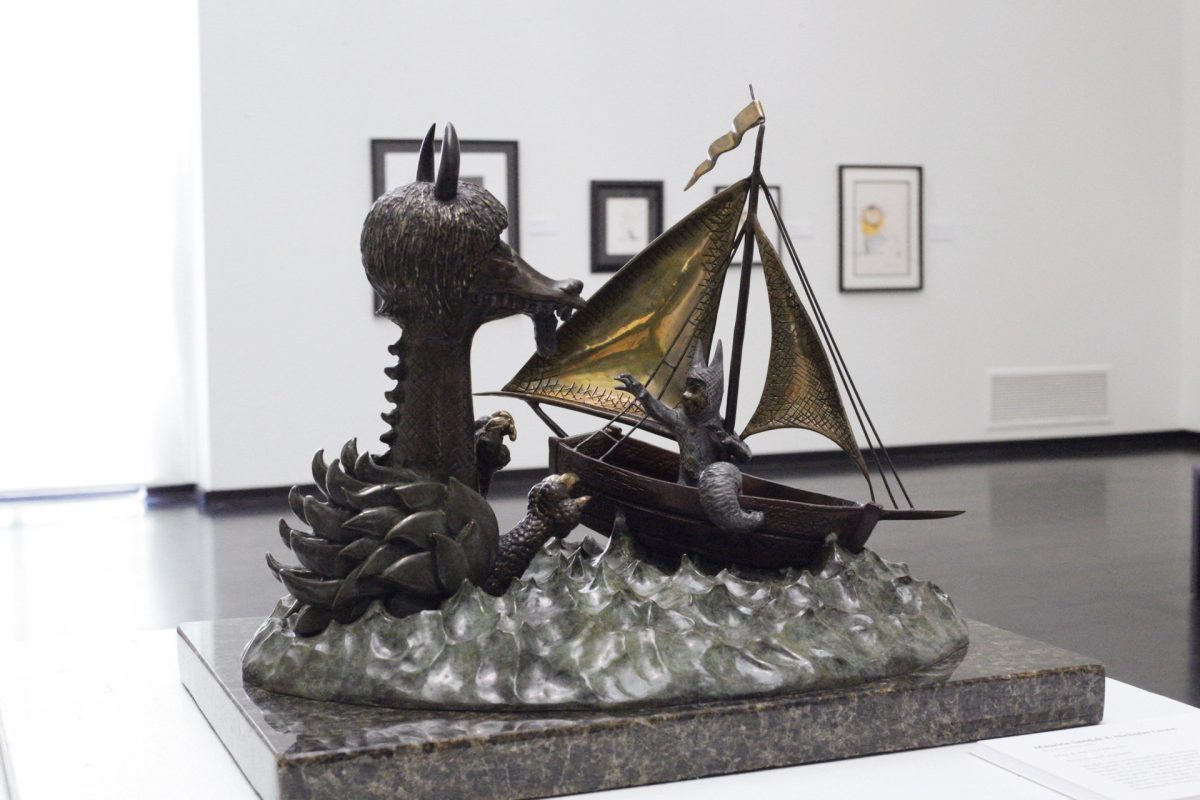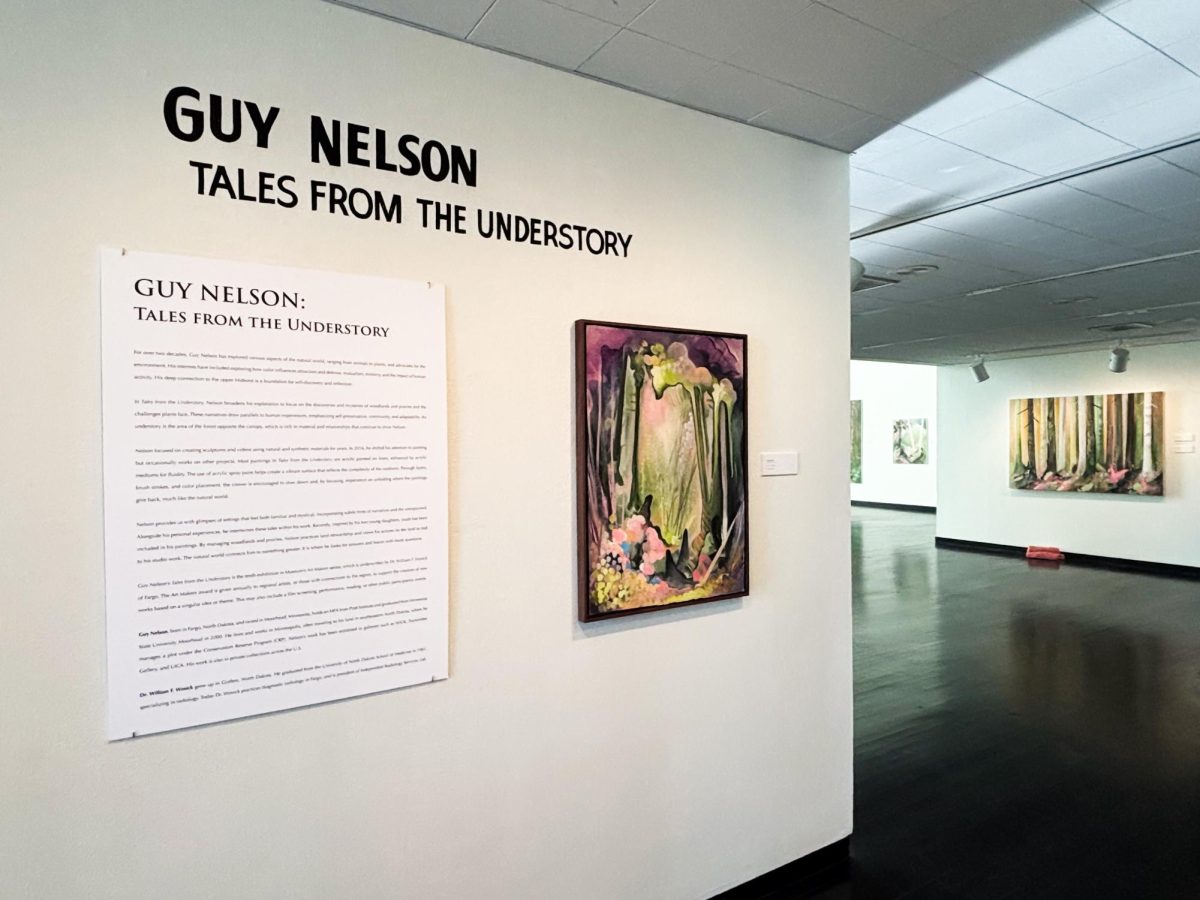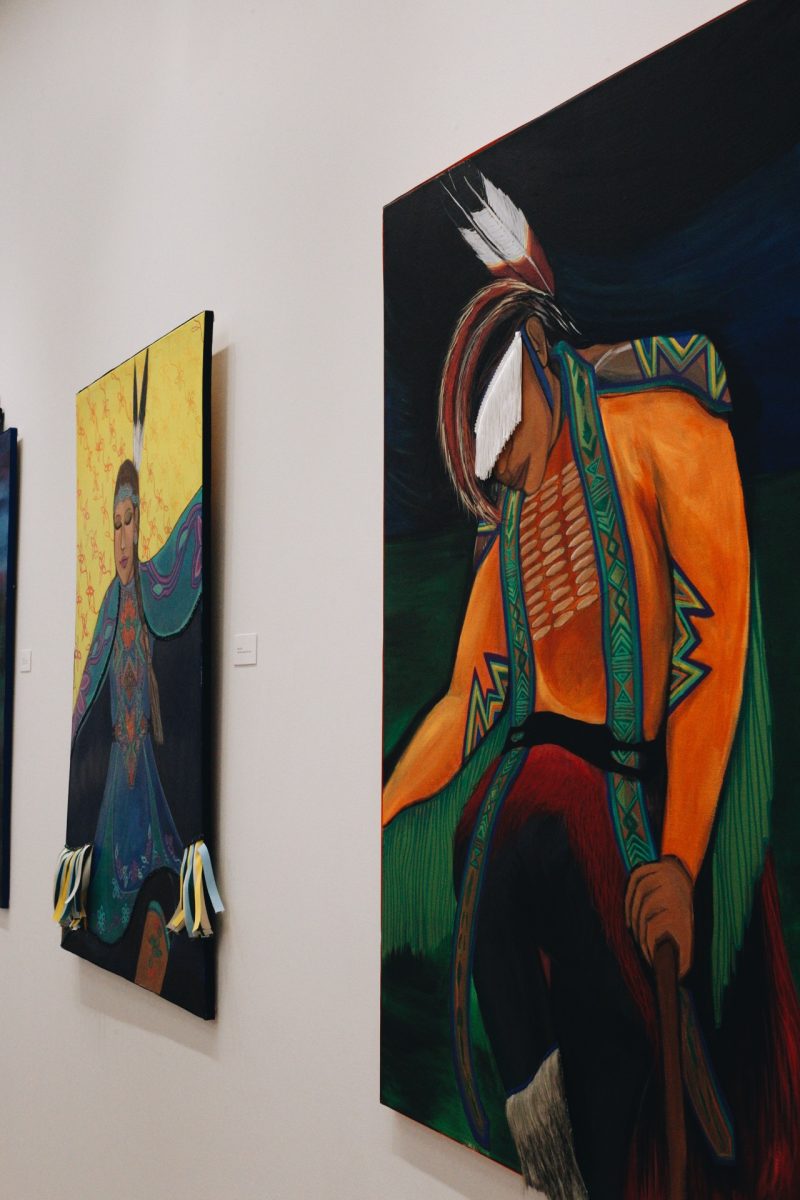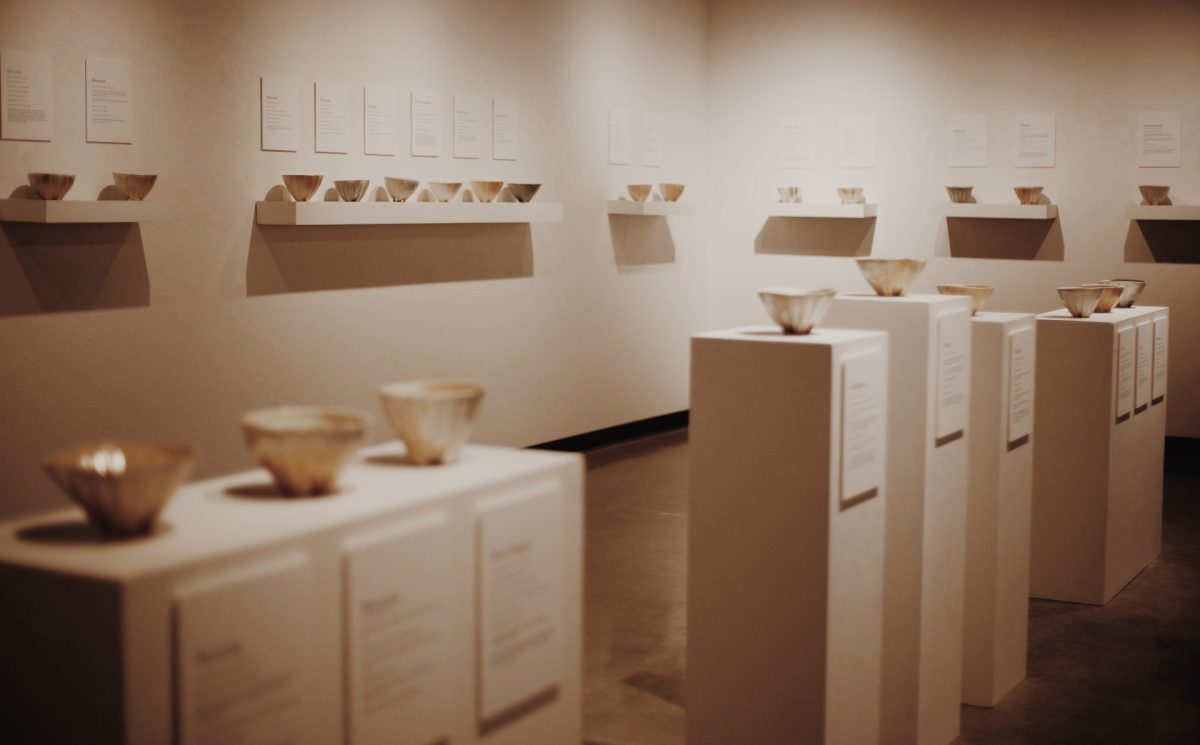When you open a web browser and search the question “what are the most popular children’s books?” One of the top results is “Where the Wild Things Are” by Maurice Sendak. If you ask anyone from this generation of college students and even their families if they are familiar with this book, odds are they are very familiar with it. This is no shock when you consider the intricate and beautiful artwork and storytelling that went into the creation of this book.
It has been 50 years since Maurice Sendak’s thrilling story of Max and the Wild Things was first published. To honor this anniversary, The North Dakota Museum of Art is currently hosting the “Maurice Sendak: 50 Years” art exhibit, which features works that he created before, during, and after the publication of this classic story. This exhibit provides a great look into this artist’s mind and will be there to view at no cost until May 12.
As someone who grew up with a love for the story of this book and the interesting visuals it creates, I was very excited to take a short walk through Sendak’s mind. The exhibit begins with text that provides information about the interesting history of Sendak and what led him to want to write for children and how he ended up where he did. As you walk along the wall of the museum you will notice the first few drawings of Sendak’s are simple yet intricate and feature a few personalized gifts. As you continue, you will find pages from the “Where the Wild Things Are” books shown at the true size that he created them. The vibrancy and detail of his use of hatch working and watercolor in each painting and how it catches your attention is captivating.
Along with each piece of art, you will find a description of what the piece is and some even have quotes from friends, colleagues, and Sendak himself. The range of his abilities is made quite clear as the exhibit not only features the drawings from his books but also the original designs before the book ever came to life as well as ones he drew of the characters much after its release. Along with this there are set designs he created for an opera, posters, flyers, and animation cells from short films that he helped create.
One of Sendak’s quotes that stuck out to me most was alongside a drawing of a boy and a lion and said “Art has always been my salvation. And my gods are Herman Melville, Emily Dickinson, Mozart. I believe in them with all my heart. And when Mozart is playing in my room, I am in conjunction with something I can’t explain — I don’t need to. I know that if there’s a purpose for life, it was for me to hear Mozart. Or if I walk in the woods and I see an animal, the purpose of my life was to see that animal. I can recollect it, I can notice it. I’m here to take note of. And that is beyond my ego, beyond anything that belongs to me, an observer, an observer.” This quote, along with the many others that explained how he views the growth of a child’s mind were very interesting to me. They all provide a better understanding of how he wished his writing and art would affect new generations. A common theme seemed to be that he believed children should not be shielded from reality and that you can tell them anything as long as it is true.
By far, the most impressive piece of the exhibit has to be the piece located at the entrance of the museum. This piece features multiple different panels created with watercolor and depicts scenes from Macbeth, which he created at just sixteen years old and received an A+ for in his art class. This piece and all of the other artistic works and writings of Sendak are truly inspirational, and this exhibit is a must-see for anyone who loves his work or simply enjoys art.
Nora Lee is a Dakota Student General Reporter. She can be reached at nora.lee@und.edu.














